I’m tackling a challenging task with a current project that is fun and frustrating at the same time. I have to draw consistent likenesses with several individuals and make up expressions that I have not seen them perform. It is one of those challenges that can sometimes makes me want to take up accounting or stamping out Cheerio’s for a living. The task is hard enough as it is with a single image, add to it several dozen other frames and the gray hairs multiply quickly.
like theater, the expressions/acting should exaggerate the gesture or emotion, or heighten it so everyone in the audience can experience the moment, not just the first few rows. This means that the actor should know a great deal about what it means to idealize each emotion and as well, learn to turn the dial of subtlety and create an entire gradient of emotions with equal conviction. Idealizing, or clarifying the gesture, the expression, or the action, is essential for the story to be told with the greatest assurance of clarity in mind. The reality is that more than likely you will not have reference for every specific story beat and you will have to make them up and still capture the likeness.
But to express extremes and/or very well designed subtlety, the likeness of the individual must be well controlled. This means that before beginning any illustration it is a good idea to warm up with the subject until the subject could theoretically be drawn without the reference.
I have tried to break down the process of generating a likeness by separating most of the key components into a design language. When we draw, we are using the combination of these tools plus drawing experience and all the subtle nuances of that, and knowledge of anatomy.
I am using one of my subjects for a project I am currently working on. His name is Chris Roberts and he is a host for a Skateboarding Podcast called The Nine Club Show. If you like skating its worth listening to, long overdue. Anyway, here are the two reference points I am working from along with all the video footage from the Podcast hidden behind his mic. The Profile ref is a frame grab from one of the few moments he is filmed in profile so it was great that I actually found this. Notice that in many front views you might miss the change in planes between the cheek bones and the muzzle and the pentagonal design with the mustache and beard shapes on his face. This is exactly why it is important to hunt down solid reference especially when the job calls for a likeness of a celebrity or public figure.
Here is a brief list of items to consider when attempting to capture a likeness and some ideas about how they might change when changing expressions.
1. Contour – Contour is not a cardboard cut-out. It is very complex and waivers between forward facing shapes and the back of the object. Related to the human head, above the cheek bones the contour is broken up into a few zones; the top of the skull contour is the middle of the skulls mass and the sides are really the back portion of the skull. Below the cheek bones the contour is the back of the jaw, and towards the chin that contour is the front of the skull. (Brain burst moment)
2. Features – One of the more important aspect of capturing a likeness is getting the distance between the features accurate. The starting point to establish this distance is the keystone shape between the eyebrows called the Glabella. The pitch on both sides of this inverted triangle are measured from the sloping angle of both eyebrows. The distance between the brows and the angle of both brows helps the artist triangulate this feature.
All the other features are triangulated back to the centerline and keyed off of the distance between the eyes. Most of us do not have perfectly symmetrical features so remember that when you are establishing the triangulation between the reference points that the only fixed point will be the one on the centerline, the other two points will more than likely vary in elevation and distance from each other and the centerline.
3. Orthographic relationship between the front view and the side view – It would be fantastic to have video footage of the individual but if you are doing a graphic sequence of Abraham Lincoln that could be a bit tricky. However, if you can find reference for both a pretty solid front view and a pretty solid profile view then you are in great shape.
Lines on the face divide volumes from one another, natural lines are plane breaks from the skeletal and muscular/fatty masses under the skin. Lines from age express similar mass divisions on the face and occur perpendicular to muscle forms. Where these lines occur are usually divisions for forward protruding masses, or sideways protruding masses. Along with the line break there should also be a value change of some sort. A hint, if the light source is powerful enough to diminish this subtle lighting of form chance, especially on a forward-facing portrait, the other indicator is temperature change, which is a fancy way of saying color change.
4. Gesture – Sometimes doing all the math will still capture something less like the person, less correct in the “feeling”. A person is living, a photo is a snapshot in time. That snapshot captured them mid breath, inhaling or exhaling and everything changes on us in very subtle ways. Was the photo shot when the person was happy, angry, depressed? Etc. We have to be very careful in how we choose that reference and take many of these aspects into consideration when launching from that reference point. Sometimes that quick gestural line that was barely thought over when executed can be that mark that makes everything “just right” in capturing not just a likeness, but the personality of the individual so many might know so well.
I also feel it is important to know how to cartoon or line gesture as much as sight measure or whatever other academic tools the artist trains to use. Without this skill I feel that another aspect of likeness, caricature, will not translate very well and the likeness can easily border line on not really looking quite like the individual or have a measured out look to it rather than it “feeling” right in its effortlessness. These are short gesture sketches, each about 3 minutes each attempting to exaggerate the shape language and become familiar with the design of his portrait.
5. Value – Value=Form and form is the other likeness factor. Value sets up color for when that is applied so value is complexion and dimension simultaneously. This is where multiple views will be very helpful to deduce the images that you are copying from. Looking for the color and light changes will be important. What you see on one side of the head will be similar on the other side of the head but do not assume they will be perfect
6. Shapes – Abstraction is seeing beyond the norm and looking for other attributes that help solve the drawing problems we encounter when copying something. Shape is an abstract concept. We look beyond the details and sum up the space we think we are perceiving and we use that geometric design as another tool to help capture the essence of the subject.
7. Drawing experience – without an understanding of how to control lines and tones, many of the tools above will be difficult to control and maintain consistently from one drawing to the next. Learning to control line weight, pressure, edge, shape, etc. is another essential tool in helping to make capturing a likeness less difficult to accomplish.
8. Anatomy and understanding plane breaks – in addition to drawing experience, training in anatomy is also important to help facilitate the drawing experience with reference points to achieve using the above tools. This is not as difficult as it may sound but it does require a game plan to build on or it can spin out of control rather quickly.
This was roughly 30 minutes using a Blackwing Soft pencil and 11 x 17″ xerox paper, cheap but effective. When I am sketching to learn I do not hold dearly to any of the drawings, they are all subject to abuse and radical change. When I get nice paper I feel guilty when I have to butcher up a drawing to correct it, and I feel like I should not have made a major mistake on such important and expensive paper, which in the end is a goofy way to think. It takes sacrifice to learn the tools of our trade.
When learning representational art, likeness is important. To capture what you draw as accurately as possible is the only way to have an honest objective dialog between student and instructor, and is a solid way to judge that your eyes and hands are developing in your craft. Likeness is also an important measure of how far along you are with your training and how much further you want to or should develop before looking to become a professional. And to the professional a likeness is important so you know how to start from there then tweak as needed and still capture the essence of who it is that you are crafting up.
As soon as I get finished with this job I will get back to those color portraits. Practice as much as you can between jobs or just whenever you can. Have a goal when you practice so you can gauge whether you have accomplished more than just the act of drawing or painting, and Happy Arting.




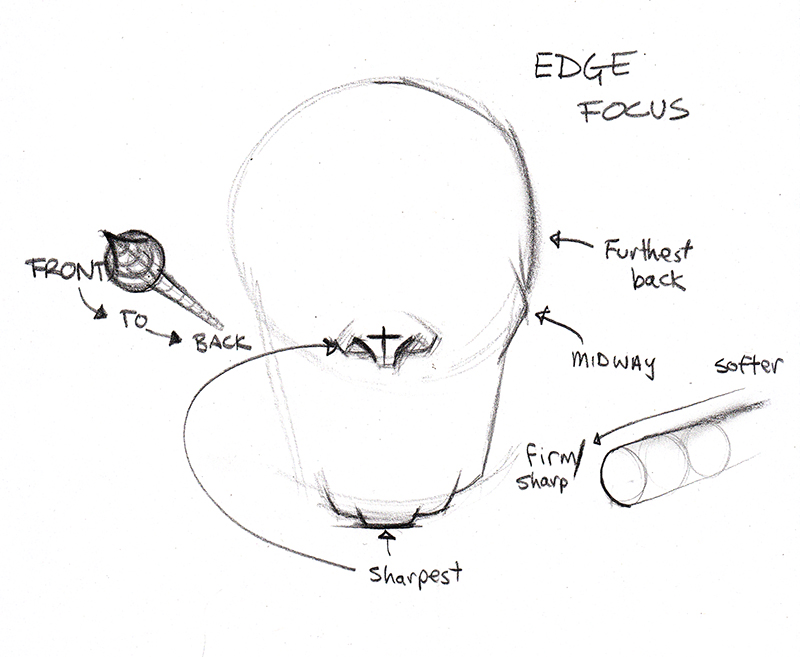
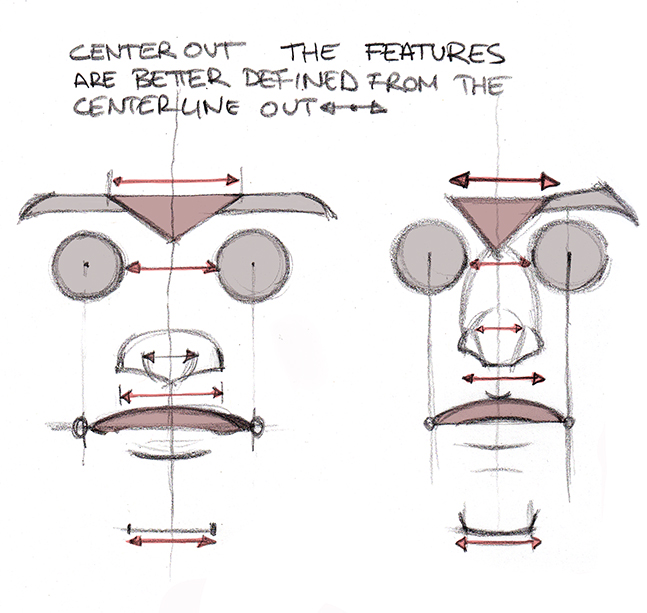
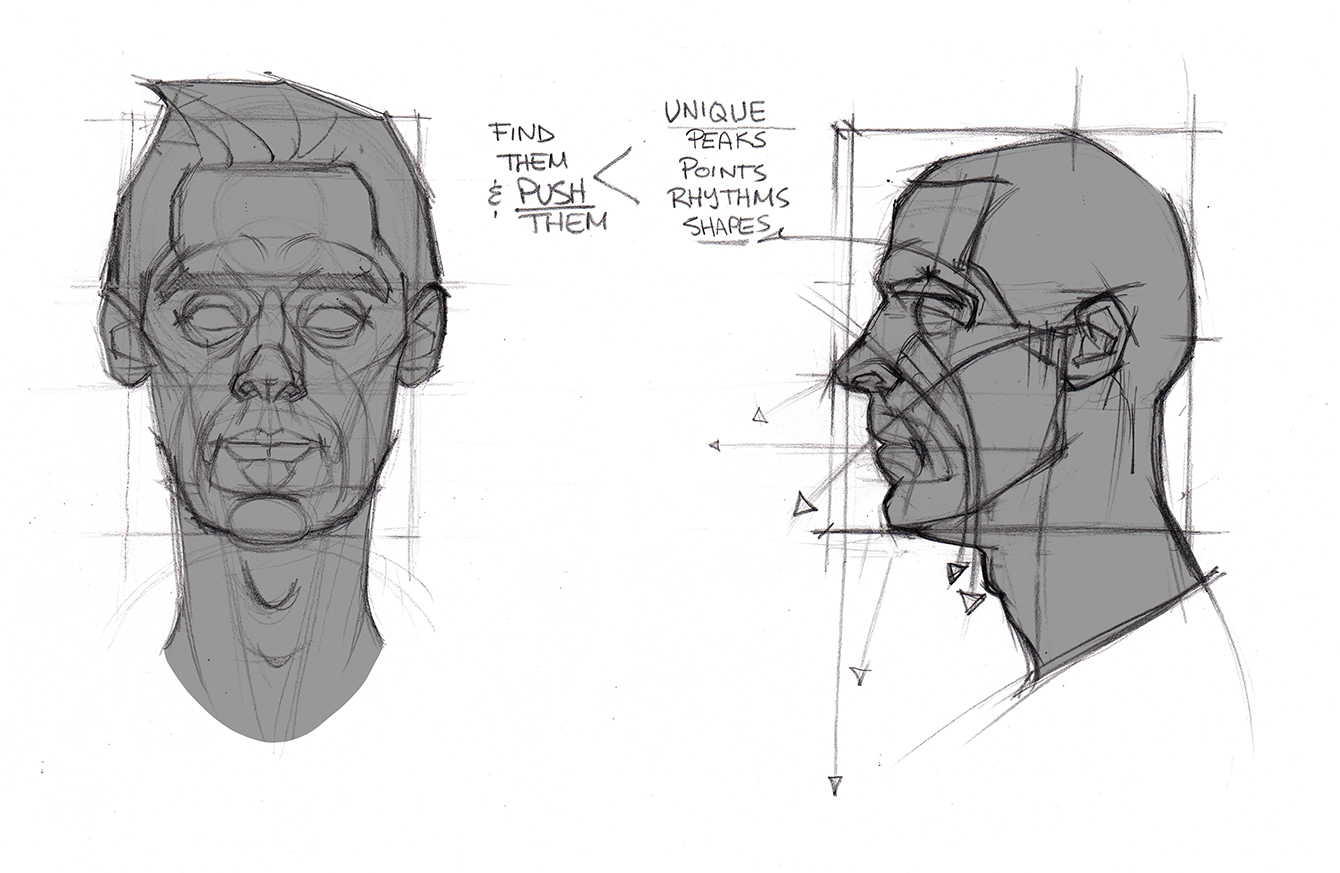
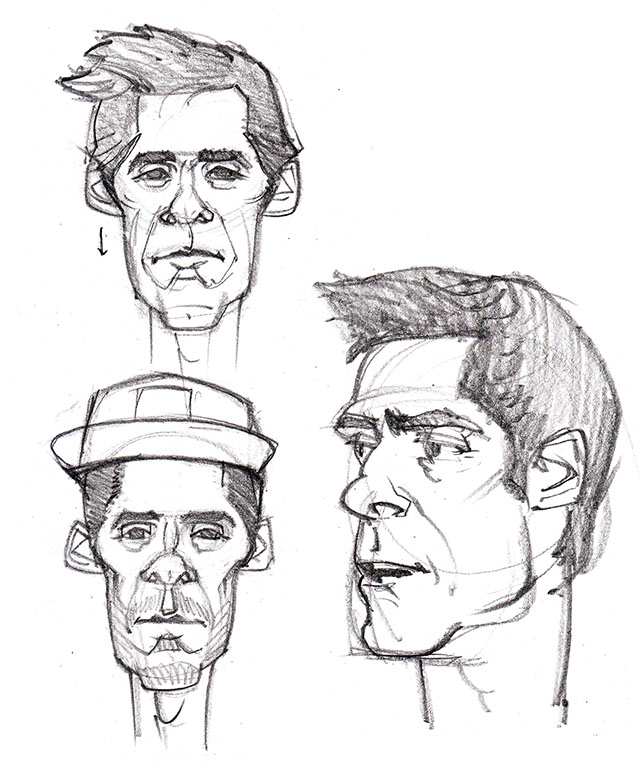
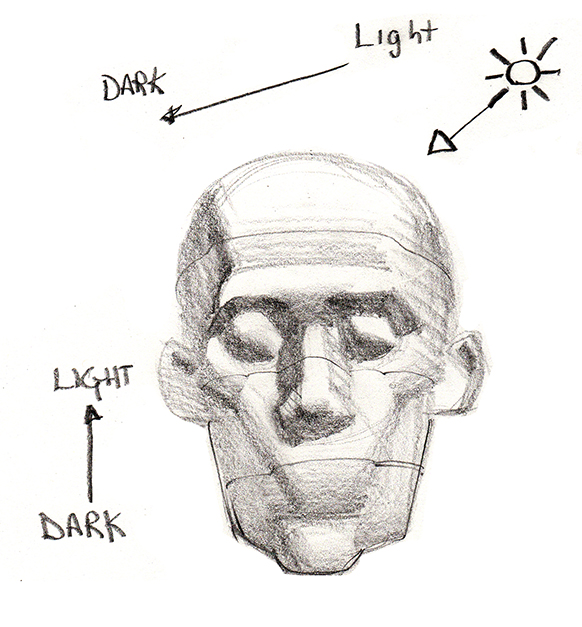
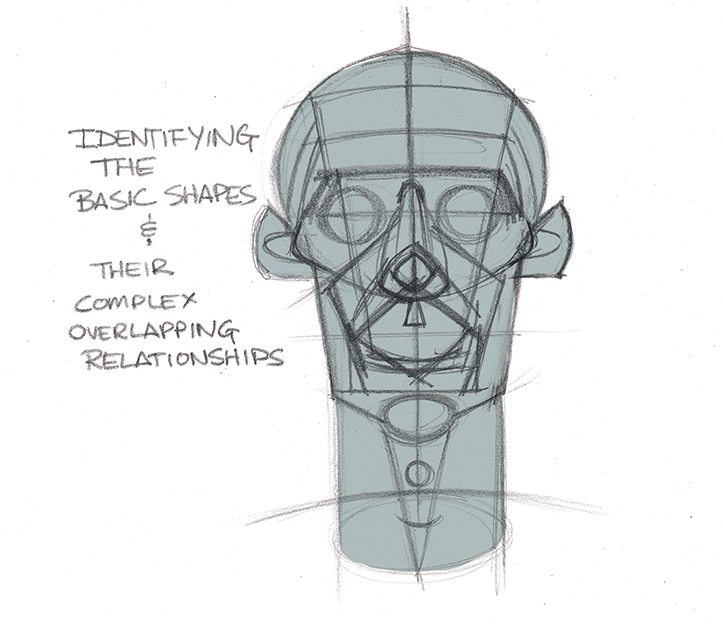
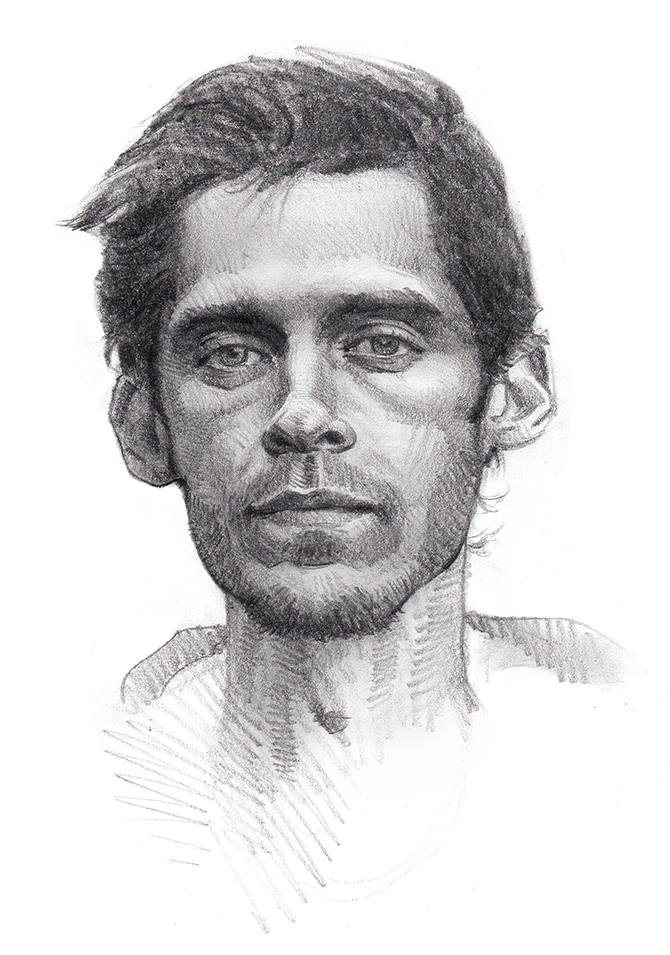
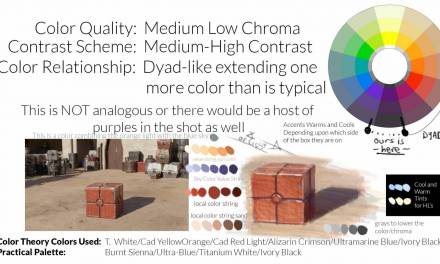
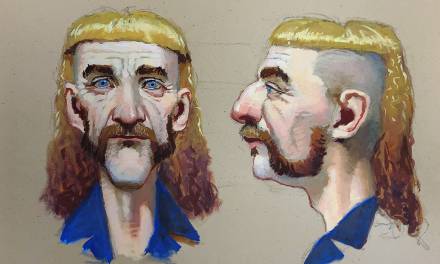

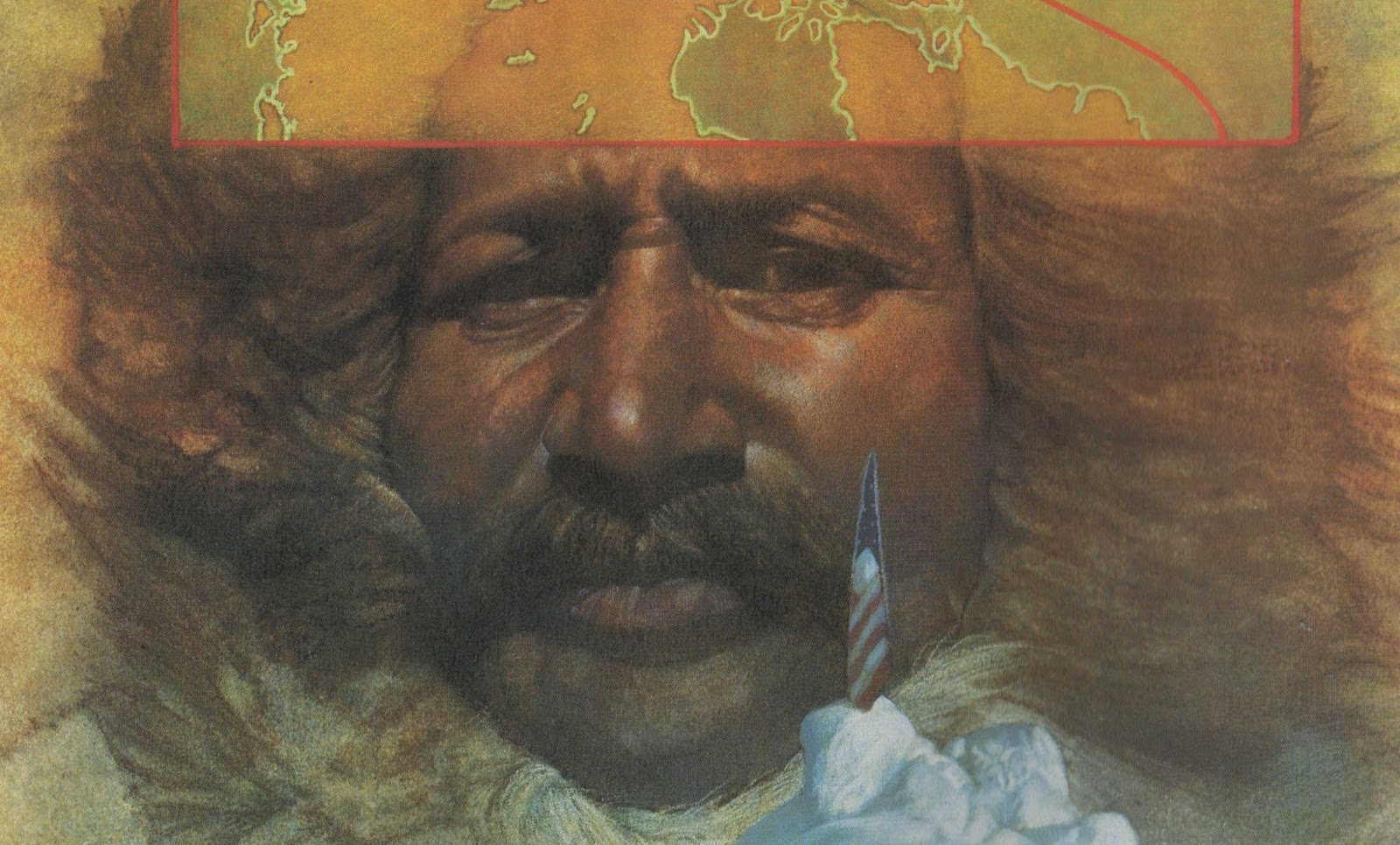
Extremely useful, thanks a lot.
Great advice! Thank you for sharing! Love the finished result.
VioletDaffodils
this lesson, list.. whatever helps tons!
Printing this out! I am working on something currently where I'd really like to capture the likeness of a specific person who lived in the 19th century… but only two images of him are known to exist (one as a young man, another as an older man). And also one image of his father, to whom he had a strong likeness. I may well throw in the towel on creating this character, but I will give this a try first.
Ron, thank you for your insight and instruction. You're helping bridge the gap college art missed. I enjoy sharing with my students what I'm learning…or didn't.
-Appleby
Hi Ron, after your great video for the patreon subscribers I've visited lemenaid.com approximately once a week and nothing has changed or happened yet. Hopefully we will see the webpage open soon, just wanted to say this to tell you how great your patreon video was and how much it helped me to see things better in 3d and make a battleplan about what skills I need to train in order to get approved to an art school! Thanks for the great video, hopefully we will hear more about you soon!
thx